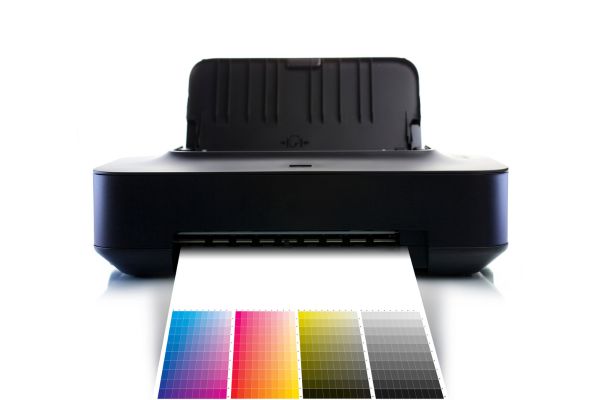Printers are an essential tool in both personal and professional settings, allowing us to transform digital files into tangible documents. However, encountering printer issues can be frustrating and disrupt our workflow. In this comprehensive guide, we will delve into the most common printer problems and provide step-by-step solutions to help you troubleshoot and resolve them effectively. Whether you’re dealing with paper jams, connectivity issues, print quality problems, or error messages, this article will equip you with the knowledge and techniques to tackle these issues head-on and get your printer back up and running smoothly.
Paper Jam Issues
Paper jams are a common occurrence in printer usage and can occur for various reasons, such as incorrect paper loading, worn-out rollers, or debris in the paper path. When faced with a paper jam, the first step is to identify the jammed area and carefully remove the jammed paper. In cases where the paper tears and leaves fragments behind, using tweezers or small pliers can help remove any remnants. It’s crucial to consult your printer’s manual for specific instructions on clearing paper jams as different printer models may have unique mechanisms. To prevent future paper jams, ensure that the paper is properly aligned, avoid overfilling the paper tray, and periodically clean the paper feed rollers to maintain their grip.
Connectivity Problems
Connectivity issues can hinder your ability to communicate with the printer, whether you’re trying to print wirelessly or via a wired connection. When troubleshooting connectivity problems, start by checking the physical connections between your printer, computer, and network router. For wireless connections, ensure that your printer is within range and that the Wi-Fi signal is stable. If the connection issue persists, restarting your printer and computer, as well as power cycling your network router, can often resolve temporary glitches. Additionally, updating your printer’s firmware and drivers to the latest versions can help ensure compatibility with your operating system and address any known connectivity issues. If necessary, consult your printer’s manual or manufacturer’s website for detailed instructions on troubleshooting connectivity problems specific to your printer model.
Print Quality Problems
Print quality issues can range from faded prints and streaks to smudges and distorted text or images. To address print quality problems, start by checking the ink or toner levels and replace them if necessary. Cleaning the printhead or toner drum can also help remove any clogs or debris that may be affecting the print quality. It’s important to use the appropriate cleaning methods recommended by your printer manufacturer to avoid damaging the printhead or other components. Adjusting the print settings, such as print resolution and paper type, can also have a significant impact on print quality. Experimenting with different settings and performing test prints can help identify the optimal configuration for achieving the desired print quality. If the issue persists, it may be necessary to calibrate the printer or seek professional assistance.
Slow Printing Speed
Slow printing speed can be frustrating, especially when you have a large volume of documents to print. Several factors can contribute to slow printing, including large file sizes, complex graphics, and network congestion. To improve printing speed, consider optimizing the print settings by selecting a lower print quality or switching to draft mode for non-essential documents. Breaking down large print jobs into smaller batches can also help reduce processing time. If using a network printer, ensure that the network bandwidth is sufficient and that there are no network issues causing congestion. Additionally, keeping your printer’s firmware and drivers up to date can provide performance enhancements and improve overall printing speed.
Error Messages and Codes
Error messages and codes can be cryptic, but they provide valuable clues about the underlying issues. When encountering an error message or code, note down the specific details and refer to the printer’s user manual or the manufacturer’s website for guidance. Error messages like “Out of Paper” or “Low Ink” often indicate straightforward solutions, such as replenishing paper or replacing ink cartridges. Other error codes may require more in-depth troubleshooting, such as clearing print queues, resetting the printer, or addressing software conflicts. In some cases, error messages may be indicative of hardware malfunctions, requiring professional intervention or contacting the manufacturer’s customer support for further assistance.
Printer Driver Issues
Printer driver issues can cause printing problems, including print job errors, formatting issues, or even the inability to communicate with the printer. When facing driver-related issues, a common solution is to reinstall or update the printer driver. Start by uninstalling the existing driver from your computer and then download the latest driver version from the manufacturer’s website. Ensure that you choose the correct driver for your printer model and your operating system. Once installed, restart your computer and test the printer. If the problem persists, consider using the manufacturer’s driver diagnostic tools or seeking help from their customer support.
Maintenance and Cleaning
Regular maintenance and cleaning can significantly improve the performance and longevity of your printer. Dust, debris, and ink or toner residue can accumulate over time and affect print quality or cause mechanical issues. Consult your printer’s manual for specific cleaning instructions and recommendations. In general, you can clean the exterior surfaces using a soft, lint-free cloth and mild cleaning solution. For internal components like the printhead or toner drum, follow the manufacturer’s guidelines and use approved cleaning materials. Additionally, consider scheduling periodic maintenance tasks, such as printhead alignment, to ensure optimal print quality and prevent potential problems.
Compatibility and Software Issues
Compatibility issues between the printer, operating system, and software can lead to printing problems. Start by ensuring that your printer is compatible with your operating system and that you have installed the necessary drivers and software. If experiencing compatibility issues, consider updating your operating system to the latest version and checking for software updates or patches for your printing applications. It’s also helpful to verify that the printer’s firmware is up to date to ensure compatibility with the latest software updates. If compatibility issues persist, consult the printer’s user manual or contact the manufacturer’s support for further guidance.
Firmware Updates
Firmware updates provide critical bug fixes, security enhancements, and performance improvements for your printer. Regularly check for firmware updates on the manufacturer’s website or through your printer’s control panel. Before updating the firmware, ensure that your printer is connected to a stable power source and follow the provided instructions carefully. In case of any issues during the firmware update process, such as power outages or interruptions, consult the manufacturer’s support documentation or contact their customer support for assistance. Keeping your printer’s firmware up to date can help resolve known issues and ensure optimal performance.
Printer Hardware Issues
While software-related issues are more common, occasional hardware problems may arise. Mechanical components, such as paper feed mechanisms or printheads, can experience wear and tear over time. If you suspect a hardware issue, start by checking for any visible signs of damage or obstructions. Ensure that all printer components are properly installed and seated. If the problem persists, consult the printer’s user manual for specific hardware troubleshooting steps. Depending on the severity of the issue, it may be necessary to contact the manufacturer’s customer support or seek professional repair services.
Conclusion
Troubleshooting common printer issues can be a daunting task, but with the right knowledge and techniques, you can effectively resolve many problems that may arise. From paper jams and connectivity issues to print quality problems and error messages, the steps outlined in this comprehensive guide provide a solid foundation for troubleshooting your printer. Remember to consult your printer’s user manual and the manufacturer’s website for specific instructions tailored to your printer model. Regular maintenance, firmware updates, and keeping your drivers up to date will also contribute to a smooth printing experience. By employing these troubleshooting strategies, you’ll be able to overcome printer challenges and ensure efficient and reliable printing in both personal and professional environments.



